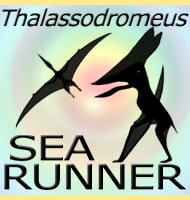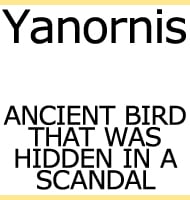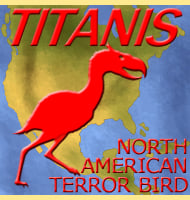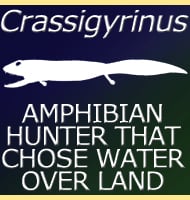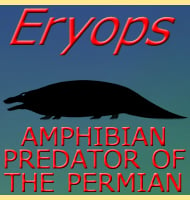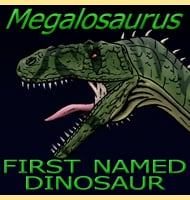In Depth
If there has ever been a genus that has been a serious source of confusion for people, it’s Scansoriopteryx. We’ll start with the correct name for this genus regarding whether it should be Scansoriopteryx or Epidendrosaurus. We are certain that both of these genera are one and the same and therefore synonymous. However, both were named in 2002, very close to one another, but in different ways. Epidendrosaurus was named first, but the name was published online. Scansoriopteryx was second but named in a more traditional sense of an actual printed publication. Normally the first name to be established should have priority, however at this time the ICZN, the body that governs the naming of animals, did not recognise online sources, and therefore sided with Scansoriopteryx as the valid genus since that one fulfilled the parameters then set for establishing a scientific binomial name. This triggered a debate amongst publishers, the internet and publication of journals online instead of hard copy printing was the future and today you can almost always buy a paper in either printed or downloadable format. Indeed in 2004 J. D. Harris proposed an amendment to the rules governing the naming of animals. However because at the time the ICZN did not have online sources as valid, Scansoriopteryx continues to be held up as valid by most researchers, though a small number continue to insist upon keeping Epidendrosaurus as the valid name., and Scansoriopteryx as a synonym.
One problem regarding the study of Scansoriopteryx is that we are still not very confident about how old the genus is. The Holotype specimen was bought from a fossil collector who didn’t keep a record of where it had come from, and age estimates ranged from late Jurassic to early Cretaceous, with the original describers citing the Yixian Fomration as the probable source. The former Epidendrosaurus specimen was a bit better in that it was known to have come from the Daohugou Beds, however, at the time the exact age of the Daohugou Beds was unknown, though today it is thought to be part of the Tiaojishan Formation which runs from the mid to late Jurassic.
When first named by Czerkas and Yuan in 2002, Scansoriopteryx was described as a tree climbing maniraptoran dinosaur. However, Scansoriopteryx does display a few features previously unseen or rare in dinosaurs. Firstly the third finger of the hand is more than double the length of the second finger, the one that it usually the longest. The lower jaw bones may have been fused together, something only known in oviraptosaurs. Additionally Scansoriopteryx had a non-perforated hip socket that was more open than most other dinosaurs. Scansoriopteryx did have small downy feathers over its body, and larger feathers.
In 2014 Stephen Czerkas and Alan Feduccia published a new paper on Scansoriopteryx regarding how it fitted in with the origin of birds. Feduccia is well none for his support of the alternate theory that birds are not descended from dinosaurs but rather from tree climbing archosaurs. This paper highlights the features not commonly seen in dinosaurs as well as a forward facing pubis which they took as a very primitive feature. The theory about Scansoriopteryx being a non-dinosaurian archosaur and ancestor of birds does not end there though, but what are currently classed as maniraptoran dinosaurs would actually be descended from birds and not actual dinosaurs at all.
Already this theory has proven controversial, and the 2014 study has also not been widely accepted, either by palaeontologists or by numerous writers on internet blogs. If the discoveries of the early twenty-first century have shown us anything then the appearance of birds is most likely housed within the dinosaurs, but the actual appearance of birds is also murky. To begin with, where do you draw line between what is a dinosaur and what is a bird? The opinion varies, with dozens of possible interpretations, and discoveries now show us that while some forms went forward, some took a step back, while others went down evolutionary dead ends.
As far as Scansoriopteryx is concerned it is in a bit of a grey area, but most consider it to still be a dinosaur. Scansoriopteryx is now also the type genus of its own though small group called the Scansoriopterygidae. Currently the only other members of this group are Epidexipteryx and Yi. As far as being a living breathing animal is concerned, Scansoriopteryx was almost certainly an arboreal tree climber. The long fingers as well as the extended third finger would have been a significant benefit in reaching around tree trunks and branches and climbing along them. There has also been past speculation that the long fingers may have been used to dig out grubs that were hidden within crevices and under bark on the trunk. Scansoriopteryx had no backwards facing toe on the foot, but is thought to have still had a limited perching ability.
The exact feather covering on Scansoriopteryx is unknown, in part due to incomplete remains on some parts of the body, but also since the only known specimens are juvenile, adults might have had a different and/or more developed plumage. While downy feathers did cover the body, larger feathers seem to have been present upon the arms. While powered flight is unlikely given that there was no deep keel on the breast bone (am attachment point for flapping wing muscles), Scansoriopteryx may have still been able to glide for short distances. Pebbly scale impressions are known from the feet suggesting that these probably didn’t have any feathers.
Small fossilised eggs discovered in Thailand are now no longer thought to be from Scansoriopteryx.
Further Reading
- An arboreal maniraptoran from northeastern China. Feathered Dinosaurs and the Origin of Flight. The Dinosaur Museum Journal 1. - The Dinosaur Museum, Blanding, UT 63-95. - S. A. Czerkas & C. Yuan - 2002. – A juvenile coelurosaurian theropod from China indicates arboreal habits. – Naturwissenschaften 89(9):394-398. - F. Zhang, Z. Zhou, X. Xu & X. Wang - 2002. - Are current critiques of the theropod origin of birds science? Rebuttal to Feduccia (2002). - The Auk, 120(2), 550-561. R. O. Prum - 2003. - Jurassic archosaur is a non-dinosaurian bird. - Journal of Ornithology, 1-11. - S. A. Czerkas & A. Feduccia - 2014. - ‘Published works’ in the Electronic Age: recommended amendments to Articles 8 and 9 of the Code. - Bulletin of Zoological Nomenclature 61(3): 138-148. - J. D. Harris - 2004.

